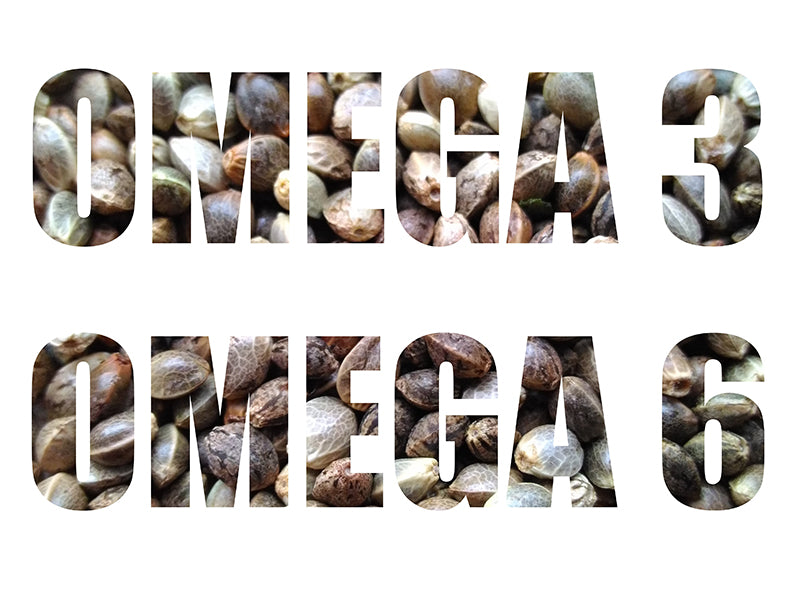
Why do you need polyunsaturated fatty acids (PUFA) in your diet every day?
For your long-term health PUFA also known as omega 6 & 3 are essential and indispensable.
The human body can build most of the different fats it needs from any other fat in the diet. If it needs monounsaturated fat for a specific need, it can build it from saturated fat. It can even build fat from carbohydrates. However, it can’t make PUFA from scratch. Therefore, they must come directly from your diet and are called essential fats.
Omega-6 is also called linoleic acid (LA) and omega-3 is also called alpha-linolenic acid (ALA).
What’s so unique about hemp seed oil?
It’s a fantastic plant-based source of PUFA (omega 6 & 3). And (this is kind of obvious) no fish were harmed when you get your omega 3 from hemp seed oil. Great news for vegans (and for the fish!!). You can only get omega 3 from fish, not omega 6.
There are other plant sources of PUFA, walnuts, flaxseed, safflower, sunflower, canola, dark green leaves however, in comparison to other plant oils, hemp seed oil has the highest proportion of polyunsaturated fatty acids, over 80%.
The other unique benefit of hemp seed oil is the amount of PUFA (omega 6 & 3). Although there is insufficient evidence to suggest an optimal ratio of 6 to 3, there is a recommended range.
The range recommends a higher intake of omega-6 to omega-3.
- Omega-6 the range is 2.5 – 9% of your daily energy
- Omega-3 the range is 0.5 – 2% of your daily energy.
The lower end of the range prevents you from suffering from a deficiency. But the higher end is better for a healthy diet.
Where do the fish come in?
When you purchase your fish oil from the supermarket or pharmacy you are buying omega 3 (not 6). It is also called ‘Marine oil’. But this isn’t alpha-linolenic acid (ALA) it’s a derivative of ALA called eicosapentaenoic acid (EPA) and docosahexaenoic acid (DHA) Figure 1. Think of AHA as the parent and EPA & DHA as the kids – related but different.
Fish can't make EPA & DHA from scratch, like us they must also consume it. Phytoplankton are the ultimate creators of Omega 3. They get eaten by zooplankton, fish eat the zooplankton and so on up the marine food chain.
Given the right dietary context we can convert ALA to EPA and then DHA. This means fish don’t need to be our only source of these essential fatty acids, hemp seed oil is the perfect alternative.

Figure 1 Omega 6 & 3 metabolic pathway
How much hemp seed oil (PUFA) do you need?
As part of a healthy diet contributing to long term health therecommended range is 6 – 11% of your daily energy comes from PUFA.

This tablespoon has about 3% omega-6 and about 1% omega-3. Reflecting the higher ratio of omega-6 to omega-3 recommendation.
What health benefits do polyunsaturated fats give us?
There is convincing evidence that these essential fats, linoleic acid (omega-6) and alpha-linolenic acid (omega-3) are indispensable in our diet.
There is convincing evidence that replacing saturated fat with polyunsaturated fat decreases the risk of coronary heart disease.
Polyunsaturated fatty acids may reduce the risk of diabetes
Replacing carbohydrates or saturated fat with polyunsaturated fat reduces harmful low-density lipoprotein (LDL) bad cholesterol.
Omega-3 derived hormones regulate blood clotting.
Omega-3 fats have been shown to help prevent or treat heart disease and stroke.




